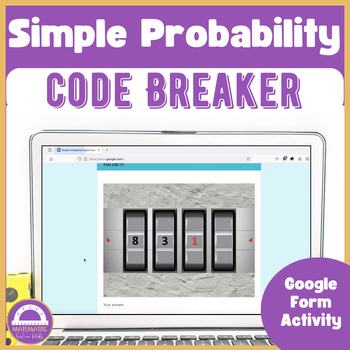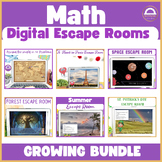Simple Probability | Digital Escape Room Code Breaker Activity
- Google Drive™ folder

What educators are saying
Also included in
- PowerPoint presentations on statistics and probalility. Perfect for an online lesson or distance learning.You can send it to your students and they'll have everything they need. If you are online with them, you can project it and comment.Or you can simply print it and give to your students.SuitablePrice $10.50Original Price $21.00Save $10.50
- Is there a math skill you need to review? Don't worry, I've got your back.Order of operations, operations with fractions, equations, coordinate plane, unit rates and more.You just need to send a link to your students and you're done. All my digital escape rooms are no prep do not require any GooglePrice $100.00Original Price $231.46Save $131.46
Description
Ready to break the code by solving probability problems?
This Simple Probability | Digital Escape Room Code Breaker includes 20 problems that you and your students must solve to figure out how to open the safe!
This Google Form activity is perfect to have 7th grade students practice solving probability problems while having fun.
EDIT: Added a set of printable task cards, handouts and solutions.
I would use this activity as a way to practice solving probability with my students. You could use this activity in almost any format needed - whole or small group, or even assign it as an individual practice activity! This code breaker activity will help your seventh-grade students to master probability problems through fun by challenging questions.
Students must solve 20 problems in order to figure out how to open a safe!
This is a Google Form activity. There are no links to outside websites. The four parts are set with answer validation: students cannot move to the next part until they solve all the problems.
Other ways to use this resource:
★ additional materials for remediation
★ a reward or “Fun Friday” activity
★ before the busy holiday break
★ an emergency sub lesson plan
Did you know...
- You can earn credits for future TpT purchases by leaving feedback on resources you purchase?
- Your satisfaction is my #1 priority! If you encounter any issues with this resource, please contact me so I can resolve any concerns. I proofread carefully and strive to provide you with quality resources, but occasionally one gets by!
Please feel free to contact me anytime!
Email:infomatemaths@gmail.com
Copyright © 2024 Matemaths
All rights reserved by the author.
Permission to copy for single classroom use only.
Not for public display.







